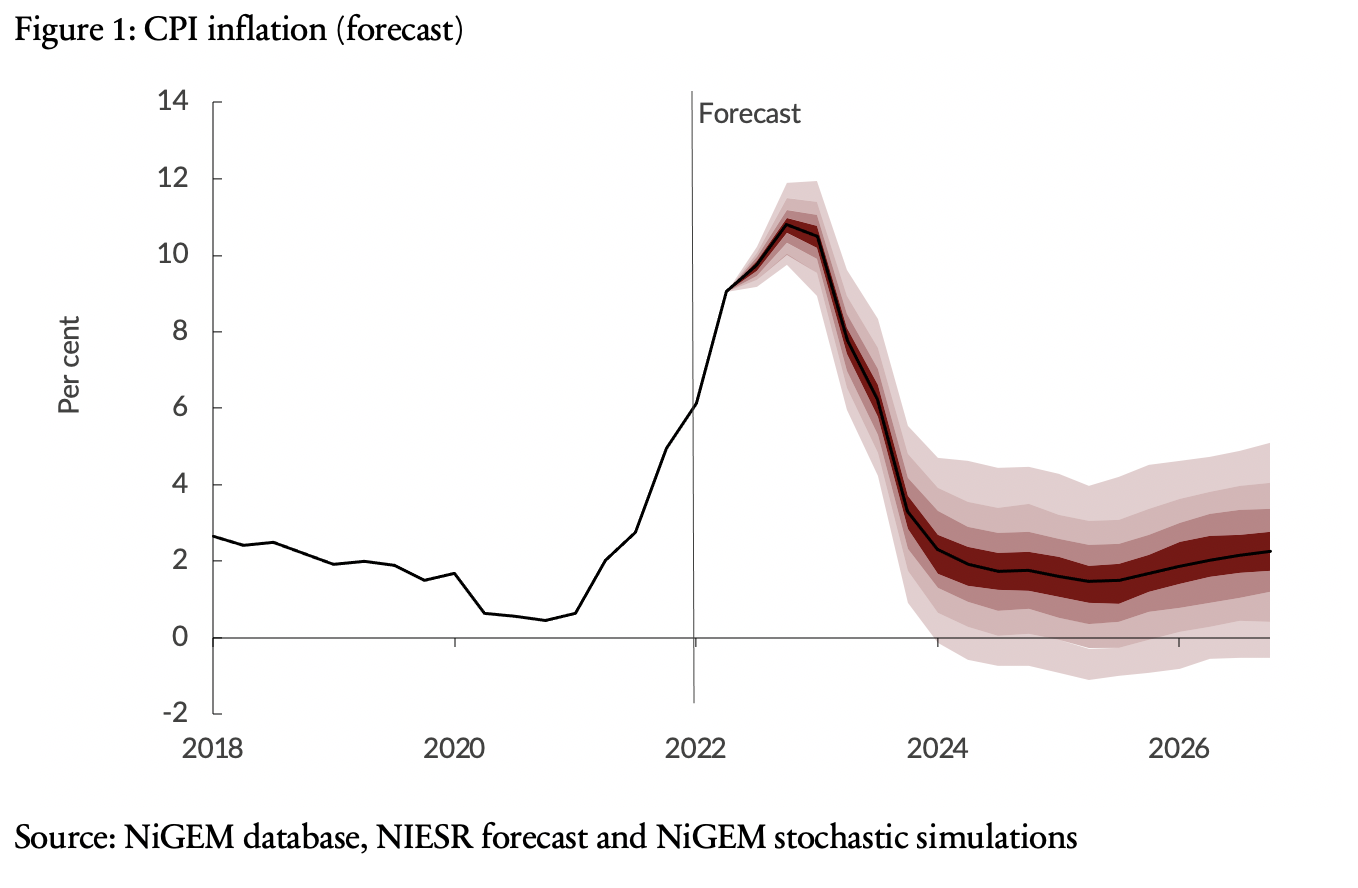The literature on inequality often focuses on household income, but this measure has several limitations for assessing individual wellbeing. Tim Obermeier develops a new collective household model which simultaneously accounts for consumption inequality within families, time use and different preferences, to measure the relationship between household income and individual wellbeing in more detail.
Much of the debate about inequality focuses on inequality in household income. Various studies have shown the extent of income inequality, which has grown since the 1980s. But there are several conceptual drawbacks to using household income as a measure of individual wellbeing.
First, household income ignores the division of resources within families: for example, when a high-earner is in a relationship with a low-earner, it is likely that the high-earner has a higher level of consumption. This type of within-household inequality is not taken into account when looking at household income. Second, household income does not capture the value of time use, regarding time spent on leisure and domestic activities. As an example, women who take on a disproportionate share of housework and have little leisure time are worse off in terms of wellbeing than it might appear from looking at their household income. Finally, assessing individual wellbeing also requires taking individual preferences on consumption, leisure and domestic work into account.
An imperfect measure
These issues suggest that household income is an imperfect measure of wellbeing. At the same time, studying individual wellbeing comes with considerable empirical challenges: for many countries, including the UK, there is limited or no data on the division of consumption within families and individual preferences are similarly overlooked in the data. To address these challenges, the literature on household economics has developed models which back out such unobserved variables indirectly.
In a new discussion paper, published by the Centre for Economic Performance (CEP), I develop a new collective household model which simultaneously accounts for consumption inequality within families, time use and preference heterogeneity. The model requires information on time use, wages and marriage and separation rates, all of which are readily available from UK survey data, and infers the implied consumption patterns, and individual preferences, indirectly from this information. With this data, the parameters of the model are chosen so that it matches patterns from the UK economy. Then, household income and individual wellbeing (measured by the so-called Money-Metric Welfare Index (MMWI)) can be compared based on model simulations.
Accounting for inequality within households
The analysis focuses on poverty (those at the bottom of the distribution) and inequality (overall dispersion of the distribution). The main result is that somebody’s rank in the distribution of household income is not identical to their rank in the distribution of wellbeing. For example, in the context of poverty, both income and MMWI poverty are defined as being in the bottom 20 per cent of the corresponding distribution. In particular, being “MMWI-poor” means being among the least well-off in terms of wellbeing.
Only 58 per cent of MMWI-poor individuals are also poor in terms of their household income, meaning that 42 per cent of them are found in households which are above the poverty threshold for income and would not be considered poor in a conventional sense.
It turns out that only 58 per cent of MMWI-poor individuals are also poor in terms of their household income, meaning that 42 per cent of them are found in households which are above the poverty threshold for income and would not be considered poor in a conventional sense. In technical terms, this is both because of intra-household inequality and economies of scale.
To illustrate an example of intra-household inequality, consider a family which has a decent household income which puts them above the poverty threshold. The model allows for different explanations for why one of the partners might be poor in terms of wellbeing. In this case, it could be that this person only receives a low fraction of household income for their own personal consumption. Another possibility is that they do all the housework and have little leisure time, which also negatively affects their wellbeing. Finally, a more subtle point is “preference heterogeneity”: it could be that an important fraction of income is spent on “public” goods, which in principle benefit everyone, but which one partner enjoys less than the other.
To understand economies of scale, imagine that there are two families who differ in their preferences – family A and family B. The model features “private goods”, which are consumed individually (such as food in a restaurant) and “public goods” (such as housing or gardening expenditure) and individuals are allowed to differ in their “preferences” (how much they like public vs private goods). Suppose the extreme case that family A only likes private goods and family B only likes the public good. In family A, the cost of providing one unit of consumption to each partner is £2. In family B, by contrast, it only costs £1 to provide one unit of consumption to everybody, since the good is public and spending £1 on it benefits everybody. Due to this effect, family B has higher “economies of scale” and its members are less likely to be poor in terms of wellbeing.
Lessons for designing better policy
These findings raise questions for the optimal design of anti-poverty policy: if the goal is to reduce inequality in wellbeing, it is important to first figure out who is MMWI-poor. Conventional anti-poverty policy focuses on the income-poor; however, the results suggest that a sizeable fraction of the MMWI-poor are not income-poor. Better measurement of wellbeing is therefore an important priority for future work.
What kind of information is required to accurately assess whether somebody is poor in terms of wellbeing? The model economy suggests that joint data on individual consumption, time use and preference heterogeneity (the three factors which are ignored by household income) is needed to predict welfare-poverty. For example, in the model simulations, predicting welfare-poverty based on someone’s individual consumption and leisure, while not taking their preferences into account, does slightly better than household income but still leaves an important fraction of the MMWI-poor unidentified. This suggests that future data collection efforts should be directed towards building a joint dataset with information on all three factors.
In terms of more concrete policy implications, I study the impact of a minimum wage increase and how it affects poverty in terms of income and wellbeing. A well-known point about minimum wage policy is that many minimum wage earners live in households that are not income-poor, as the minimum wage earner may be the secondary earner and have a high earning partner. As a result, critics of minimum wages have argued that the minimum wage does little to reduce poverty, since many minimum wage earners may not be living in income-poor households in the first place. But from the perspective of individual wellbeing, minimum wage earners can still be MMWI-poor even if they live with a higher earning partner.
To illustrate this point, I conduct a simulation in which the minimum wage is increased by 20 per cent. In this experiment, MMWI-poverty is reduced especially among minimum wage earners whose partner has an hourly wage around £20-25, and who would not be considered as poor in a traditional sense. This suggests that the minimum wage is more effective at reducing poverty among minimum wage earners than implied by looking at household income.
The results illustrate that household income and individual wellbeing do not necessarily coincide and that individual welfare measures such as the MMWI have important implications for thinking about poverty and inequality and the design of anti-poverty policies.
Taken together, the results illustrate that household income and individual wellbeing do not necessarily coincide and that individual welfare measures such as the MMWI have important implications for thinking about poverty and inequality and the design of anti-poverty policies. This suggests several important areas for future research: on the empirical side, it would be very useful to collect information on individual consumption, time use and preference heterogeneity in a joint dataset, as this would allow researchers to measure individual welfare more directly and improve measurement of the MMWI. On the theoretical side, other redistributive policies, such as taxation, could be analysed in terms of their impact on individual welfare.
This article is based on CEP discussion paper 1954 ‘Individual welfare analysis: A tale of consumption, time use and preference heterogeneity’.
All articles posted on this blog give the views of the author(s), and not the position of LSE British Politics and Policy, nor of the London School of Economics and Political Science.
Featured image credit: Ody_Stocker on Shutterstock.







